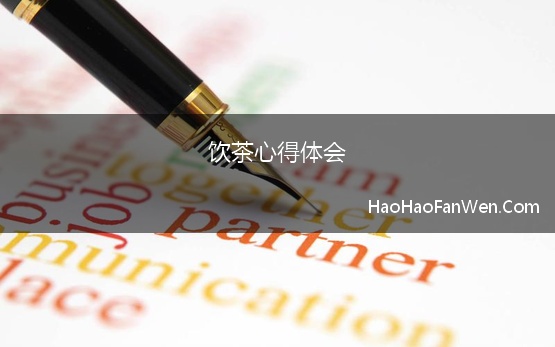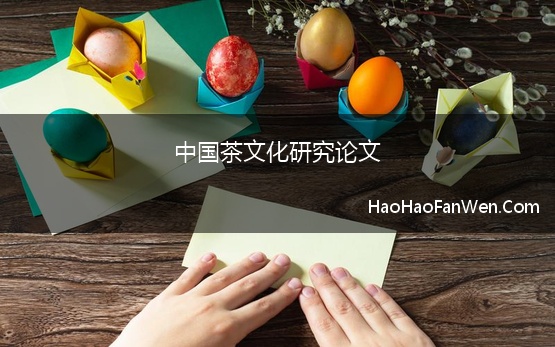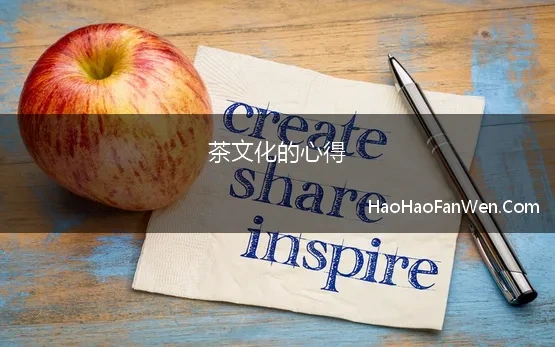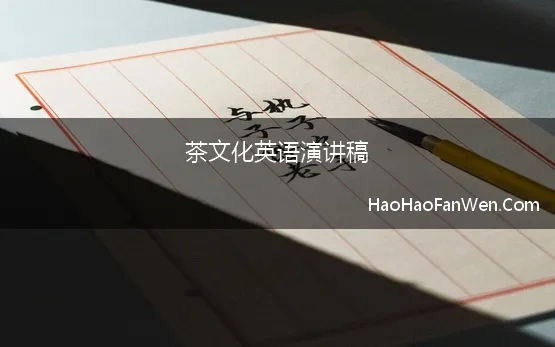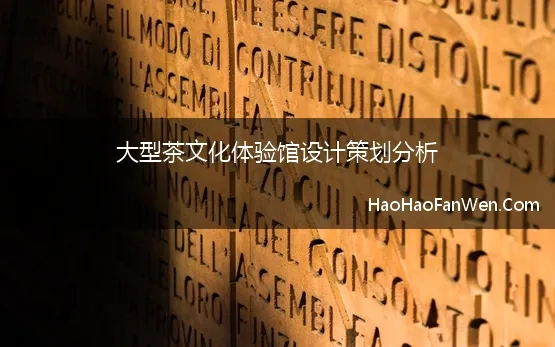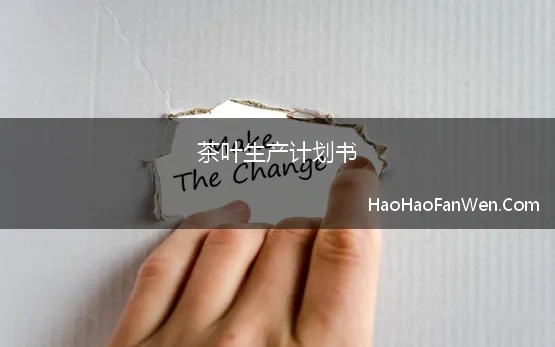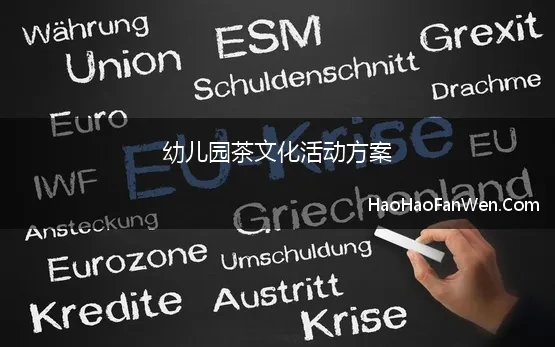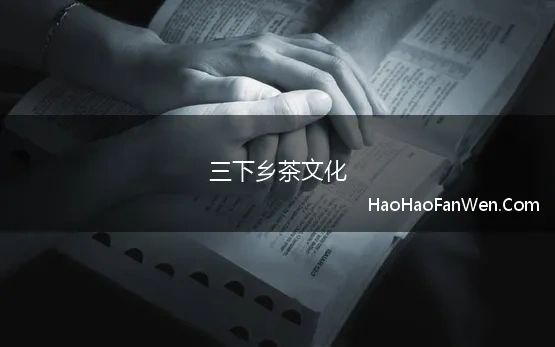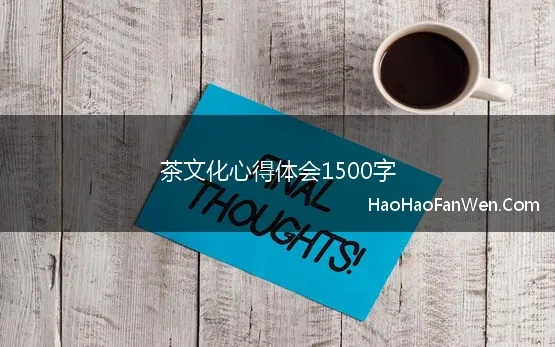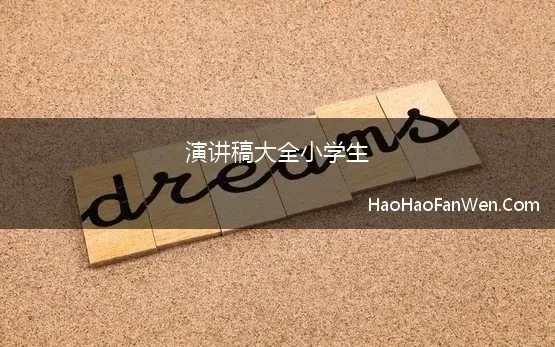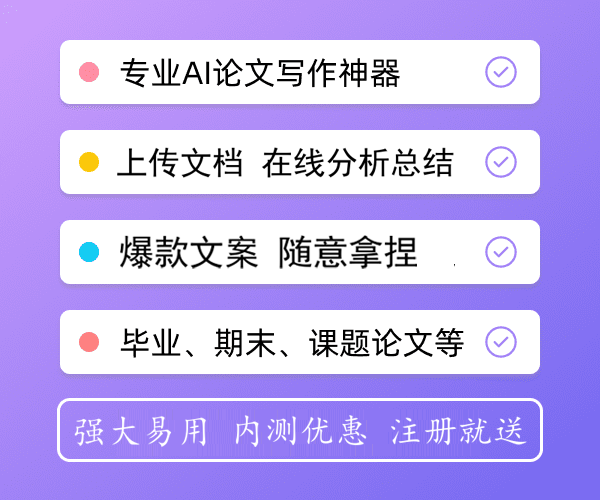茶文化的演讲英语(中国茶文化英语演讲稿)
下面是好好范文网小编收集整理的茶文化的演讲英语(中国茶文化英语演讲稿),仅供参考,欢迎大家阅读!
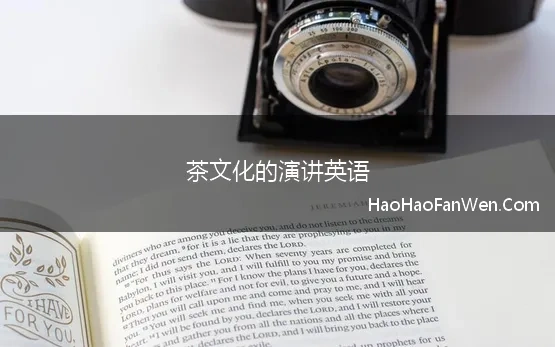
演讲稿在写作上具有一定的格式要求。在我们平凡的日常里,需要使用演讲稿的事情愈发增多,那么问题来了,到底应如何写一份恰当的演讲稿呢?
中国茶文化英语演讲稿 1
Ladies and Gentlemen:
The practice of drinking and serving tea has been part of Chinas cultural identity for centuries. China used to be the worlds sole provider of tea. Today, tea is the worlds most widely consumed beverage after water, and famous Chinese teas are still highly prized.
Tea experts estimate that top-quality Longjing will sell for 40,000 to 50,000 yuan per 500 grams this year, about 25 percent higher than last year. The price of common Longjing will be around 4,000 yuan per 500 grams this year.
Though quality tea is highly pursued at home, it seems that it has not secured a strong position in the global market.
Li Shiwei is the board chairman of Tianfu Group, a flagship tea enterprise based in Fujian Province, a major production region of oolong tea in China. He says a major problem for todays private tea enterprises is that they do not have enough money to operate on a large scale, let alone undertake promotions overseas.
"Most of Chinas tea enterprises are non-state-owned with lack of funding being their weakest point. We are glad to see that Minsheng Bank is now offering a special loan program for tea enterprises. We hope more banks in China will give us more support in terms of financing."
Li Jiaxun, board chairman of Zhejiang Tea Group, Chinas largest exporter of green tea, says a lack of widely recognized brand names is holding Chinese tea exports back and squeezing the industrys profit margin.
Li cites his own company as an example. The group mainly sells tea as a raw material rather than a branded product. As a result, its profit margin is only about 5 percent, and sometimes even lower.
The tea expert adds that Chinese companies should also adapt to the needs of western customers, who might prefer black tea to green, and teabags to loose-leaf teas.
Wen Zhongliang, deputy director of the Foreign Trade Department under the Ministry of Commerce, says it is an urgent task for Chinese tea producers and sellers to build up the image of Chinese tea abroad to boost tea exports.
"In addition to ensuring the high quality of Chinese tea, tea enterprises in the country should promote the image of Chinese tea together. It could be something of an effort to explain the cultural significance and health benefits of tea to foreigners, but once they realize that, they will find it fascinating."
The trade official suggests that existing networks such as the Confucius Institutes be used to spread Chinas tea culture around the world.
For CRI, this is Su Yi.
中国茶文化英语演讲稿 2
Ladies and Gentlemen:
It’s my honor to stand here and make a speech. My topic is “Chinese Tea Culture”.
Do you know the name of the three most famous drinks in the world? They are tea , coffee and cocoa. China is the homeland of tea which has become the national drink. In other words, tea is basically spread out from China. Referring to Chinese tea culture, it has several thousand years of history and can be traced back to the ancient times. Then it was flourished in the Tang dynasty and the Song dynasty.
At first, our ancients found tea make them excited, but they thought that drinking more would be destructive to the morals. As time went by, tea became popular among likeminded people, Confucianism, Taoism, Buddhism and cultivation culture. Until Tang Dynasty, tea culture began taking shape. When it came to Song Dynasty, tea culture became thriving. When people migrated, they would offer tea. When people engaged, they would send tea. When people got married, they would settle tea. Tea became an important part in their daily life.
In china, the main varieties of tea are green tea, black tea, Oolong tea, scented tea, white tea, yellow tea and dark tea. In the early days, the Chinese boiled their tea leaves with water and other ingredients such as salt and ginger; later they ground the dried leaves to a powder and whipped 5 them up with hot water. It was not until that Ming Dynasty that it became common practice to infuse the loose tea leaves in hot water in teapots, and then to pour the infused liquid into bowls to drink. Nowadays, we make different tea in different particular ways. Over the centuries, China developed an extraordinary tea culture, comparable with the wine culture of the West.
Tea not only has a good flavor but also benefit to our body, so it is loved by many people home and abroad. Different kinds of tea have different function which makes a contribution to our health. For example, the national drink of China-green tea, can dispel the effects of alcohol, clear away summer-heat, refresh yourself and whiten your skin. The second largest kind of tea-black tea, can warm your stomach, be good for your heart and make your bones stronger. Dark tea can refresh you in the morning, reduce your blood press and help lose weight. Oolong Tea is good for your body building and dieting. In all, tea have great medicinal value, anti-cancer, lowering blood pressure, improving eyesight and restraining disease, reducing stress and so on.
Tea culture and its development reflect not only diet culture, but also Chinese spiritual features.
China is a country with a time-honored civilization and a land of ceremony and decorum. Whenever guests visit, it is necessary to make and serve tea to them. Before serving tea, you may ask them for their preferences as to what kind of tea they fancy and serve them the tea in the most appropriate teacups. In the course of serving tea, the host should take careful note of how much water is remaining in the cups and in the kettle. Usually, if the tea is made in a teacup, boiling water should be added after half of the cup has been consumed; and thus the cup is kept filled so that the tea retains the same bouquet and remains pleasantly warm.
Tea culture plays an indispensable role in promoting the international cultural exchange between China and other countries, enriching Chinese cultural life and promoting Chinese spiritual civilization construction. In conclusion, tea culture is one of the essences of Chinese culture in the history. The spirit of tea permeates the court and society, into the Chinese poetry, painting, calligraphy, religion, medicine. For thousands of years China has not only accumulated a great deal about tea cultivation, production of material culture, but also accumulated rich spirit of the tea culture, which is unique to Chinas tea culture.
中国茶文化英语演讲稿 3
Ladies and Gentlemen:
The Chinese people, in their drinking of tea, place much significance on the act of "savoring." "Savoring tea" is not only a way to discern good tea from mediocre tea, but also how people take delight in their reverie and in tea-drinking itself. Snatching a bit of leisure from a busy schedule, making a kettle of strong tea, securing a serene space, and serving and drinking tea by yourself can help banish fatigue and frustration, improve your thinking ability and inspire you with enthusiasm.
You may also imbibe it slowly in small sips to appreciate the subtle allure of tea-drinking, until your spirits soar up and up into a sublime aesthetic realm. Buildings, gardens, ornaments and tea sets are the elements that form the ambience for savoring tea. A tranquil, refreshing, comfortable and neat locale is certainly desirable for drinking tea. Chinese gardens are well known in the world and beautiful Chinese landscapes are too numerous to count. Teahouses tucked away in gardens and nestled beside the natural beauty of mountains and rivers are enchanting places of repose for people to rest and recreate themselves.
China is a country with a time-honored civilization and a land of ceremony and decorum. Whenever guests visit, it is necessary to make and serve tea to them. Before serving tea, you may ask them for their preferences as to what kind of tea they fancy and serve them the tea in the most appropriate teacups. In the course of serving tea, the host should take careful note of how much water is remaining in the cups and in the kettle. Usually, if the tea is made in a teacup, boiling water should be added after half of the cup has been consumed; and thus the cup is kept filled so that the tea retains the same bouquet and remains pleasantly warm throughout the entire course of tea-drinking. Snacks, sweets and other dishes may be served at tea time to complement the fragrance of the tea and to allay ones hunger.
中国茶文化英语演讲稿 4
Ladies and Gentlemen:
It’s my honor to stand here and make a speech. My topic is “Chinese Tea Culture”.
Do you know the name of the three most famous drinks in the world? They are tea , coffee and cocoa. China is the homeland of tea which has become the national drink. In other words, tea is basically spread out from China. Referring to Chinese tea culture, it has several thousand years of history and can be traced back to the ancient times. Then it was flourished in the Tang dynasty and the Song dynasty. At first, our ancients found tea make them excited, but they thought that drinking more would be destructive to the morals. As time went by, tea became popular among likeminded people, Confucianism, Taoism, Buddhism and cultivation culture. Until Tang Dynasty, tea culture began taking shape. When it came to Song Dynasty, tea culture became thriving. When people migrated, they would offer tea. When people engaged, they would send tea. When people got married, they would settle tea. Tea became an important part in their daily life. In china, the main varieties of tea are green tea, black tea, Oolong tea, scented tea, white tea, yellow tea and dark tea. In the early days, the Chinese boiled their tea leaves with water and other ingredients such as salt and ginger; later they ground the dried leaves to a powder and whipped them up with hot water. It was not until that Ming Dynasty that it became common practice to infuse the loose tea leaves in hot water in teapots, and then to pour the infused liquid into bowls to drink. Nowadays, we make different tea in different particular ways. Over the centuries, China developed an extraordinary tea culture, comparable with the wine culture of the West. Tea not only has a good flavor but also benefit to our body, so it is loved by many people home and abroad. Different kinds of tea have different function which makes a contribution to our health. For example, the national drink of China-green tea, can dispel the effects of alcohol, clear away summer-heat, refresh yourself and whiten your skin. The second largest kind of tea-black tea, can warm your stomach, be good for your heart and make your bones stronger. Dark tea can refresh you in the morning, reduce your blood press and help lose weight. Oolong Tea is good for your body building and dieting. In all, tea have great medicinal value, anti-cancer, lowering blood pressure, improving eyesight and restraining disease, reducing stress and so on. Tea culture and its development reflect not only diet culture, but also Chinese spiritual features. China is a country with a time-honored civilization and a land of ceremony and decorum. Whenever guests visit, it is necessary to make and serve tea to them. Before serving tea, you may ask them for their preferences as to what kind of tea they fancy and serve them the tea in the most appropriate teacups. In the course of serving tea, the host should take careful note of how much water is remaining in the cups and in the kettle. Usually, if the tea is made in a teacup, boiling water should be added after half of the cup has been consumed; and thus the cup is kept filled so that the tea retains the same bouquet and remains pleasantly warm. Tea culture plays an indispensable role in promoting the international cultural exchange between China and other countries, enriching Chinese cultural life and promoting Chinese spiritual civilization construction. In conclusion, tea culture is one of the essences of Chinese culture in the history. The spirit of tea permeates the court and society, into the Chinese poetry, painting, calligraphy, religion, medicine. For thousands of years China has not only accumulated a great deal about tea cultivation, production of material culture, but also accumulated rich spirit of the tea culture, which is unique to Chinas tea culture.
Thank you!
中国茶文化英语演讲稿 5
Good morning, ladies and gentlemen!
Today I am here to talk about Chinese tea culture.
China is known as the birthplace of tea and has a long history of drinking tea. As early as 5,000 years ago, people started drinking tea. For thousands of years, people have developed a wide variety of teas with different flavors. Tea drinking has become an important part of Chinese life and culture.
In China, tea is not only used for refreshment, but also for medical purposes. Many Chinese believe that tea can help prevent disease and improve health. In addition, different teas have different tastes and the way of brewing them varies from region to region. Chinese people enjoy drinking tea at all times, such as breakfast or before going to bed.
The art of tea ceremony is very popular in China. A tea ceremony involves special utensils, such as tea cups, pot, and whisks. People would use these utensils to perform various tea-related activities such as preparing tea and serving it to guests. The process of tea making involves complex steps and requires professional skills.
Tea drinking is also related to philosophy and religion in China. It is believed that tea can bring peace and tranquility to your mind and soul. People also use tea as a gift to express their respect and gratitude.
To sum up, Chinese tea culture is deep rooted in Chinese people’s heart. It is a symbol of harmony and peace, as well as a spiritual nourishment. Thank you for listening.
中国茶文化英语演讲稿 6
Ladies and Gentlemen:
Its my honor to stand here and make a speech. My topic is Chinese Tea Culture. Do you know the name of the three most famous drinks in the world? They are tea , coffee and cocoa. China is the homeland of tea which has become the national drink. In other words, tea is basically spread out from China. Referring to Chinese tea culture, it has several thousand years of history and can be traced back to the ancient times. Then it was flourished in the Tang dynasty and the Song dynasty. At first, our ancients found tea make them excited, but they thought that drinking more would be destructive to the morals. As time went by, tea became popular among likeminded people, Confucianism, Taoism, Buddhism and cultivation culture. Until Tang Dynasty, tea culture began taking shape. When it came to Song Dynasty, tea culture became thriving. When people migrated, they would offer tea. When people engaged, they would send tea. When people got married, they would settle tea. Tea became an important part in their daily life. In china, the main varieties of tea are green tea, black tea, Oolong tea, scented tea, white tea, yellow tea and dark tea. In the early days, the Chinese boiled their tea leaves with water and other ingredients such as salt and ginger; later they ground the dried leaves to a powder and whipped them up with hot water. It was not until that Ming Dynasty that it became common practice to infuse the loose tea leaves in hot water in teapots, and then to pour the infused liquid into bowls to drink. Nowadays, we make different tea in different particular ways. Over the centuries, China developed an extraordinary tea culture, comparable with the wine culture of the West. Tea not only has a good flavor but also benefit to our body, so it is loved by many people home and abroad.
Different kinds of tea have different function which makes a contribution to our health. For example, the national drink of China-green tea, can dispel the effects of alcohol, clear away summer-heat, refresh yourself and whiten your skin. The second largest kind of tea-black tea, can warm your stomach, be good for your heart and make your bones stronger. Dark tea can refresh you in the morning, reduce your blood press and help lose weight. Oolong Tea is good for your body building and dieting. In all, tea have great medicinal value, anti-cancer, lowering blood pressure, improving eyesight and restraining disease, reducing stress and so on. Tea culture and its development reflect not only diet culture, but also Chinese spiritual features. China is a country with a time-honored civilization and a land of ceremony and decorum. Whenever guests visit, it is necessary to make and serve tea to them. Before serving tea, you may ask them for their preferences as to what kind of tea they fancy and serve them the tea in the most appropriate teacups. In the course of serving tea, the host should take careful note of how much water is remaining in the cups and in the kettle. Usually, if the tea is made in a teacup, boiling water should be added after half of the cup has been consumed; and thus the cup is kept filled so that the tea retains the same bouquet and remains pleasantly warm. Tea culture plays an indispensable role in promoting the international cultural exchange between China and other countries, enriching Chinese cultural life and promoting Chinese spiritual civilization construction. In conclusion, tea culture is one of the essences of Chinese culture in the history. The spirit of tea permeates the court and society, into the Chinese poetry, painting, calligraphy, religion, medicine.
For thousands of years China has not only accumulated a great deal about tea cultivation, production of material culture, but also accumulated rich spirit of the tea culture, which is unique to Chinas tea culture. Thank you!
中国茶文化英语演讲稿 7
Ladies and Gentlemen:
Today I am here to talk to you about Chinese tea culture.
China is the birthplace of tea and has a long history of drinking tea. Tea drinking has been an important part of Chinese culture since ancient times. Tea is not only used for refreshment, but also for medical purposes. Different teas have different flavors and the way of making tea varies from region to region.
In addition, Chinese tea culture involves certain etiquette. For example, using smaller cups to drink tea instead of large mugs. Also, tea is often served as a sign of hospitality and respect. Chinese people also use tea as a symbol of friendship and gratitude.
Moreover, the art of tea ceremony is very popular in China. People would use special utensils, such as tea cups, pot, and whisks, to perform various tea-related activities. The process of tea making involves complex steps and requires professional skills.
Finally, tea drinking is also related to philosophy and religion in China. Chinese people believe that drinking tea can bring peace and tranquility to one’s mind and soul.
To conclude, Chinese tea culture is an important part of Chinese culture and history. It is a symbol of harmony and peace, as well as a spiritual nourishment. Thank you for listening.
中国茶文化英语演讲稿 8
Good morning ladies and gentlemen, Today I am here to talk to you about Chinese tea culture. Tea drinking is deeply embedded in Chinese culture, and it is seen as a way of life.
There are many kinds of tea in China, such as green tea, black tea, oolong tea, white tea, and Pu’er tea. Each type of tea has its own unique flavor and properties. Apart from refreshment, Chinese people also believe that drinking tea can help improve health and prevent disease.
In addition, tea drinking is also associated with certain etiquette. For example, using smaller cups to drink tea instead of large mugs. Tea is also often served as a sign of hospitality and respect. Chinese people also use tea as a symbol of friendship and gratitude.
Moreover, the art of tea ceremony is very popular in China. People would use special utensils, such as tea cups, pot, and whisks, to perform various tea-related activities. The process of tea making involves complex steps and requires professional skills.
Finally, tea drinking is also related to philosophy and religion in China. Chinese people believe that tea can bring peace and tranquility to one’s mind and soul.
To conclude, Chinese tea culture is an important part of Chinese culture and history. It is a symbol of harmony and peace, as well as a spiritual nourishment. Thank you for listening.
中国茶文化英语演讲稿 9
Good morning ladies and gentlemen, I am here today to talk to you about Chinese tea culture. Since ancient times, Chinese people have had a special relationship with tea. Tea drinking is deeply embedded in Chinese culture, and it is seen as a way of life.
There are many kinds of tea in China, such as green tea, black tea, oolong tea, white tea, and Pu’er tea. Each type of tea has its own unique flavor and properties. Apart from refreshment, Chinese people also believe that drinking tea can help improve health and prevent disease.
In addition, tea drinking is also associated with etiquette. Chinese people usually serve tea to visitors as a sign of hospitality. There are also various tea ceremonies and rituals, such as the Gongfu Cha ceremony. This ceremony requires special utensils and involves complex procedures. Furthermore, tea drinking is also related to philosophy and religion in China. Chinese people believe that tea can bring peace and tranquility to one’s mind and soul. Tea is also used as a symbolic gesture to show respect and appreciation.
To sum up, Chinese tea culture is an important part of Chinese culture and history. It is a symbol of harmony and peace, as well as a spiritual nourishment. Thank you for listening.
中国茶文化英语演讲稿 10
Good morning everyone! Today I would like to talk to you about Chinese tea culture.
Chinese tea culture dates back to over 2000 years ago. Tea is an integral part of Chinese culture and has become an indispensable part of many Chinese people’s daily lives. Chinese people drink tea for refreshment, for medical purposes, or to show respect and hospitality to visitors. There are many kinds of Chinese tea, such as green tea, black tea, white tea, oolong tea, and Pu’er tea. Each type of tea has its own unique flavor and aroma. Drinking tea is not only a matter of taste, but also of etiquette. Chinese people prefer using small cups to drink tea, instead of drinking from a large mug.
In addition, there are countless ways of brewing and serving tea, depending on the type of tea and the occasion. For example, Gongfu Cha is a traditional Chinese tea ceremony often used when serving high-quality tea. During this ceremony, considerable attention is paid to the amount of tea leaves used, the temperature of the water, and the number of steepings.
Moreover, tea plays an important role in Chinese philosophy and religion. Chinese people believe that tea can help them relax and gain insight into the universe. Most importantly, tea is a symbol of friendship and respect.
To conclude, Chinese tea culture is a rich and diverse tradition that has been passed down from generation to generation. I hope that by
understanding and appreciating Chinese tea culture, we can all enjoy a cup of tea together in peace and harmony. Thank you for your attention.
Ladies and Gentlemen:
The practice of drinking and serving tea has been part of Chinas cultural identity for centuries. China used to be the worlds sole provider of tea. Today, tea is the worlds most widely consumed beverage after water, and famous Chinese teas are still highly prized. Tea experts estimate that top-quality Longjing will sell for 40,000 to 50,000
yuan per 500 grams this year, about 25 percent higher than last year. The price of common Longjing will be around 4,000 yuan per 500 grams this year. Though quality tea is highly pursued at home, it seems that it has not secured a strong position in the global market. Li Shiwei is the board chairman of Tianfu Group, a flagship tea enterprise
based in Fujian Province, a major production region of oolong tea in China. He says a major problem for todays private tea enterprises is that they do not have enough money to operate on a large scale, let alone undertake promotions overseas.
"Most of Chinas tea enterprises are non-state-owned with lack of funding being their weakest point. We are glad to see that Minsheng Bank is now offering a special loan program for tea enterprises. We hope more banks in China will give us more support in terms of financing." Li Jiaxun, board chairman of Zhejiang Tea Group, Chinas largest exporter of green tea, says a lack of widely recognized brand names is holding Chinese tea exports back and squeezing the industrys profit margin. Li cites his own company as an example. The group mainly sells tea as a raw material rather than a branded product. As a result, its profit margin is only about 5 percent, and sometimes even lower. The tea expert adds that Chinese companies should also adapt to the needs of western customers, who might prefer black tea to green, and teabags to loose-leaf teas. Wen Zhongliang, deputy director of the Foreign Trade Department under the Ministry of Commerce, says it is an urgent task for Chinese tea producers and sellers to build up the image of Chinese tea abroad to boost tea exports. "In addition to ensuring the high quality of Chinese tea, tea enterprises in the country should promote the image of Chinese tea together. It could be something of an effort to explain the cultural significance and health benefits of tea to foreigners, but once they realize that, they will find it fascinating." Chinese tea together. It could be something of an effort to explain the cultural significance and health benefits of tea to foreigners, but once they realize that, they will find it fascinating." The trade official suggests that existing networks such as the Confucius Institutes be used to spread Chinas tea culture around the world. For CRI, this is Su Yi.

